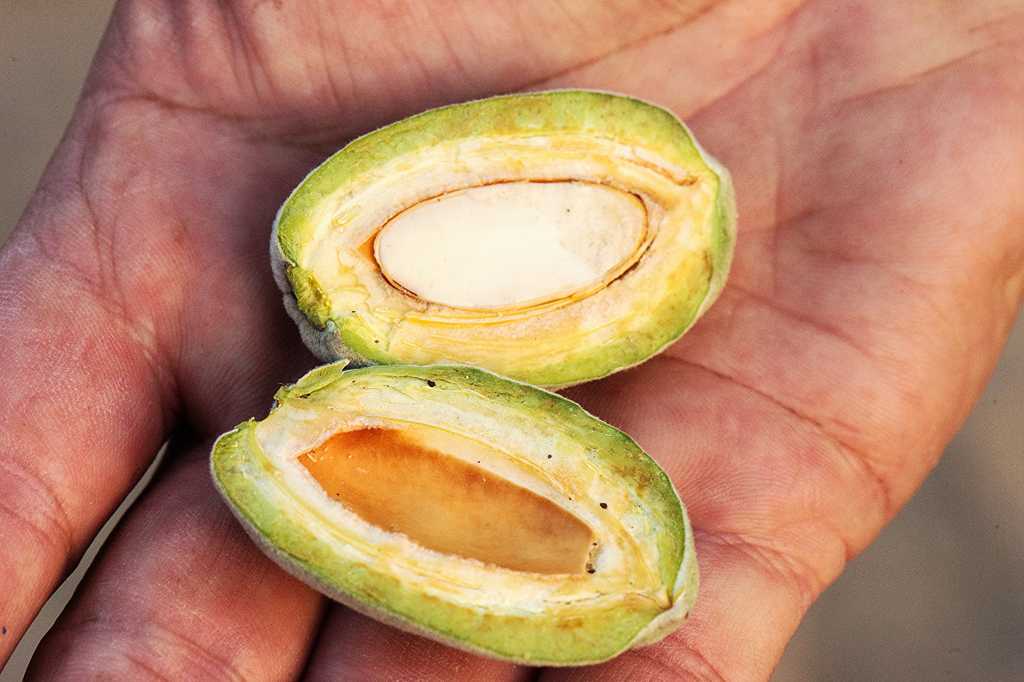
A true all-around food
Almonds are one of the most popular nuts among Europeans. Traditionally associated with the Christmas season, today they are appreciated throughout the year as a healthy snack in between meals, as a milk substitute, as an ingredient for delicious pastries, or as a crunchy topping over one’s morning cereal. Almonds contain natural plant protein, healthy fats to provide energy throughout the day, and 15 essential nutrients.
Almonds are high in unsaturated fat (“healthy fats“) and a source of protein and fiber. They are high in the minerals copper and zinc, and are a source of folate and iron, all of which may play a role in the normal functioning of the immune system.
Almonds are also high in the antioxidant vitamin E which may help protect cells from oxidative stress caused by environmental factors. Almonds may even support your skin and hair as they provide two B vitamins (niacin and riboflavin) and zinc, all of which contribute to the maintenance of skin, and copper, which plays a role in normal hair pigmentation.
Nibbling almonds as a snack can help to curb your appetite, as a study found. Many vegetarians/vegans use almonds to add protein and spice up pasta dishes or to create a delicious cheese spread. As the snacking category continues to become more relevant to consumers, almonds continue to prove to be a versatile snack for everyday life.

Almonds around the world
Almonds have been grown since ancient times and are referenced in Greek mythology and the Bible. Today, wild almond trees grow on the eastern Mediterranean coast, which has suitable climatic conditions. Almond trees bloom soft pink flowers in the spring. They are so beautiful to look at that even Van Gogh put his love for them on canvas in his world famous “Almond Blossoms” series that he painted while living in Southern France.
Almond orchards were established in California’s San Joaquin, Fresno and Sacramento valleys at the beginning of the 20th century. Today over 90% of California’s 7,600 almond farmers are family owned and operated. These farms produce more than 80% of the world’s almonds and are continuously working on reducing water usage, embracing zero waste, and supporting honey bee research to establish new practices to protect bees in the orchards in order to make a more sustainable future for everyone.

From orchard to table.
Crunching into an almond, it’s hard to imagine the journey that little nut took to make its way to your mouth. Grown in California’s ideal Mediterranean climate, the annual almond life-cycle has many stages and an abundance of natural beauty. Almond farming is a long-term commitment. Orchards generally produce for 25 years, yielding their first crop three years after planting.
November through January, almond trees go through a period of dormancy, losing their leaves and chilling out in California’s cool, wet winters. In early spring almond tree buds begin to burst into beautiful white and light-pink blooms. From March to June, almond kernels mature and grow to full size, with the shell hardening around it—both protected by a fuzzy outer hull. Once the spring rains stop and the weather heats up, farmers begin irrigating their orchards to support the growing crop, taking great care to ensure each drop of water is used responsibly and efficiently. At this time, green almonds can be harvested for various culinary uses.

In July, almond hulls split open, exposing the almond shell. This allows it and the kernel inside to dry. Shortly before harvest, the hulls turn a straw-yellow color and open completely. The almond harvest takes place from late summer into autumn. This is done by vigorously shaking the almonds to the ground. Protected by their outer hulls and shells, the almonds then dry naturally in the warm California sun for 7–10 days before being swept for transport to the next stop on their journey. California almonds make their way to almond lovers in over 90 countries worldwide.
“The Almond Board of California promotes natural, wholesome and quality almonds and supports innovative research on the many health benefits of almonds as well as on the best growing practices and drive the accelerated adoption of industry best practices to ultimately bring to life the Almond Board’s vision to make life better by what we grow and how we grow.” – Almond Board of California.
¹ Hull S, Re R, Chambers L, Echaniz A, Wickham SJ. A mid-morning snack generates satiety and appropriate adjustment of subsequent food intake in healthy women. Eur J of Nutr 2014; DOI 10.1007/s00394-014-0759-z.



